September 18, 2010
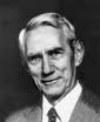
Marcel Golay
1902 - 1989
He stopped by
...
and gave us
High Resolution
| Field shims headaches
Liang Yang, a PhD Candidate from Wuhan, China, asks:
... I am interested in the shimming algorithm for superconducting magnets, and I try to simulate the shimming procedure for the NMR instrument (Varian INOVA 500MHz) in our lab. I can get the functions of 18 shim coils, but I am puzzled to the function of each shim coil since there is no report or paper about 28 shim coils. I don't know whether the function of the shim coils is the same for all manufacturers, and according to which rule or function the shim coils are designed ...
Best wishes, Yours Sincerely, Liang Yang.
The field homogeneity shims are coil systems designed to carry adjustable DC currents and thus produce additional small magnetic fields in and around the sample area. When the currents have correct values, these fields compensate magnetic field deviations from the central value and thus make the field highly homogeneous across the whole sample.
The basic idea of using electric currents to improve magnetic field homogeneity was around well before NMR was discovered in 1945. However, the field-homogeneity needs of NMR spectroscopy are extremely high and in mid 50's it became clear that something clever had to be done about it in order not to hinder the progress of the new discipline. The problem was solved elegantly in 1957 by Marcel Golay, a mathematician working at that time for Perkin Elmer Corporation.
The clever part consisted in the realization that, due to Maxwell equations, any magnetic field inside a closed volume can be generated by a suitable distribution of electric currents on its surface. In those times there existed only electromagnets and permanent magnets with flat poles between which to place the probehead with the sample. The appropriate closed volume looks in this case like a round cake-box inserted sideways between the magnet poles. Marcel Golay recognized that if he took away from the box the cylindrical strip between the bottom and the lid, this would not make much of a difference - he would not be able to create an arbitrary magnetic field inside the box, but he would still stay pretty close to that goal. Removing the cylindrical strip of course leaves just two round parallel plates - the bottom and the top of the original box - to fix right on the magnet poles. On these Golay plates, or shim plates, one must somehow dispose the desired electric currents.
The second tricky problem consisted in how to dispose the currents in order to achieve maximum flexibility in the generated field profiles and, at the same time, reduce the required number of current sources to a manageable minimum. On top of it, Marcel wanted the shims to be independent of each other so that adjusting one current would not change the optimal settings of the others. This is a lot of requirements and Marcel did not even know what kinds of magnetic field inhomogeneity profiles he would encounter in practice. Being a mathematician, however, he did not need to know: he knew a-priori that if he could generate field profiles approximating polynomial spherical functions, he could pretty well compensate any field inhomogeneity due to the fact that any smooth function f(x,y,z) can be expanded into polynomial spherical harmonics series. An automatic extra benefit of clinging to spherical harmonics is that they are mutually orthogonal and this leads to the desired mutual independence of the shims.
Consequently, he computed for each harmonic the geometry of a suitable set of coils (the Golay coils to be incorporated into the Golay plates) which would generate the desired field profile using a single electric current source. Naturally, in the real world nothing is perfect. First, in NMR we have a preferred z-direction (the one of the main field) which makes the symmetry cylindrical rather than spherical. Hence we distinguish between zonal harmonics (labeled z, z^2, z^3, ...) and tesseral harmonics (labeled x, y, xy, xz, yz, x^2-y^2, ...) and give a major preponderance (by including higher orders) to the zonal ones. Next, since the Golay plates do not really enclose the space between them, one can only approximate the harmonics, compromising some of the orthogonality. On the other hand, what helps a bit is the fact that we are really interested just in the z-component of the magnetic field, not in the whole field vector (actually, due to the constraints Maxwell equations impose on static magnetic fields, the transversal components to a large extent take care of themselves, provided we take care of the z-component).
To go into the details of all this would be too lengthy and boring, but you sure see the logic behind it. Marcel Golay ended up with 13 sets of thin coils (4 of which zonal) which were glued into grooves machined in the Golay plates. The result was a shim system capable of producing field homogeneity of 1 part in 10^8 (without rotation; sample rotation improves the specification by another order of magnitude). That was quite sufficient for the 30 to 100 MHz iron magnets of the 50's to 70's and permitted, for example, the measurements of long range couplings smaller than 0.1 Hz. Due to the pretty good orthogonality it was also possible to shim the field manually by 20-turn current-source trimmers (though some empirical skill was needed and not everybody was up to the task).
What changed with the passage to supercons?
First, the field became axial and the imaginary flat cake-box became a tall cookie cylinder. Since the basic principle remains intact, it is in this case natural to remove the bottom and the top of the cylinder which leaves us with an open shim tube to carry the shim coils to be glued into suitable grooves on its surface. Second, since the main fields are higher and we want the same resolution as before (in Hz), we need better relative homogeneity. Third, the probe space is more crammed and since the internal probe geometry with all its RF leads, tuning capacitors and other devices violates the cylindrical symmetry, funny-shaped magnetic field deviations need to be accommodated.
As a result, more shim coils are needed (the record number so far is 39, I believe). Moreover, while Golay's coils for ferro-magnets generated reasonably well-shaped harmonics, nowadays the deviations from the ideal often exceed 50% (especially for higher orders). Consequently, orthogonality is severely impaired and shimming is mostly done by software (though a good operator can still beat the computer by a large factor). In fact, the geometry of the shim coils is numerically optimized to match as much as possible the particular hardware, paying lots of attention to aspects such as orthogonality and power dissipation, but none at all to the now obsolete harmonic functions.
There would be much more to say, but now the answers to your questions should be clear:
While the 18-shim set might be still reasonably close to producing spherical harmonics, you should better consider the 28-coils set as an empirical object. Unless you get from the manufacturer the actual drawings of the coils (which is unlikely) you will never know the field shapes they produce. The labels on the shims are to a large extent just that - labels. And no, there is absolutely no standardization of shims between different manufacturers. On the opposite, there is usually not even much correspondence between the shims of two instrument models from the same manufacturer!
Sorry about that, but that's life ... Thanks for the question, however, since it gave me the possibility to talk about Marcel Golay whose fundamental contribution to NMR spectroscopy is often overlooked.
References:
- Golay Marcel J.E.,
Field Homogenizing Coils for Nuclear Spin Resonance Instrumentation,
Rev.Sci.Instruments 29, 313 (1958).
DOI link.
This is the original paper on shim plates for iron magnets.
- Golay Marcel J.E., Rumson M.J.,
NUCLEAR MAGNETIC RESONANCE APPARATUS,
US Patent n.3569823 (1971).
PDF link.
This one extends it to shim cylinders for supercon magnets.
|
September 4, 2010
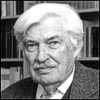
Robert Pound
1919 - 2010
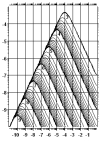
BPP formula
plots
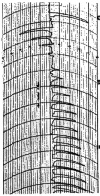
1951: First
Inversion Recovery
| Magnetic Resonance and General Relativity
Until last April there was a link between Magnetic Resonance and the General Theory of Relativity which, alas, no longer exists! The link was the person of Robert Vivian Pound who departed us at the age of 91. But let me explain better.
Towards the end of 1945 Robert was a graduate students of Edward Purcell, affiliated with MIT but with a move to Harvard University already in sight. That's why Jabez Curry Street lent them his no longer used 'cosmic shed' attached to the Physics Departments' Lyman Laboratory at Harvard. Robert later said: "Curry's lab hadn't been occupied for some five years and was full of cobwebs, so we spent some time reactivating it. This began in November of 1945 and our experiment was successful on December 15, 1945."
He was talking about nothing less than the discovery of NMR in bulk matter, a few days before a similar and independent achievement by Felix Bloch's group at Stanford University. Now, in case you wonder how they could be so fast, consider that the experiment (i) was no official project, (ii) there were no deadlines and (iii) there were no management meetings. Strictly speaking, they were not even properly authorized to be in that place :-)
Later on, Robert always kept an eye on NMR. For example, his is the second 'P' in the famous Bloembergen-Purcell-Pound formula for relaxation times. For a randomly tumbling pair of spin 1/2 nuclides (constant distance, orientation-dependent dipolar interaction) their expressions lead to the BPP dispersion profile shape which plays a similar role in MR relaxometry as does the Lorentzian lineshape in spectroscopy (see this) and the Gaussian function in statistics (click the image on the left for its graphical representation).
Two members of the BPP trio later received Nobel Prizes. Edward Purcell's was for the discovery of NMR (shared with Felix Bloch's), but he is equally well known for his discovery of the 21 cm hydrogen line which revolutionized our knowledge of the Universe and for the fact that he and Norman Ramsay were the first physicists to challenge the CP (charge-parity) symmetry. Nikolaas Bloembergen got the prize for an apparently unrelated work in nonlinear optics and spectroscopy which, nevertheless, was conceptually influenced by his previous experience with NMR. This was typical of most physicists in those days - only very few (like Felix Bloch) would stick to a single topic and, besides, NMR covered just a trifle speck of physics territory!
Robert was no exception. He did not get a Nobel, but he merited one, though not necessarily for NMR. Exploiting the newly discovered Mössbauer spectroscopy, he devised and carried out (also in a record time) what I consider the most amazing, precise and elegant physics experiment of all times which confirmed the gravity-induced blue shift of spectral lines predicted by Albert Einstein's general theory of relativity. His 'gravity well' was the Lyman Laboratory tower, just 22.5 meters tall, so the trick consisted in devising a way to measure frequency shifts of Mössbauer lines with a precision better than one part in 10^15! He and his student G.A.Rebka did so and confirmed Einstein's hypothesis with a maximum estimated error of just 10%.
So, now you know about the link between magnetic resonance and the general theory of relativity. And you also know that this is a belated and a bit unusual obituary. A better one by Paul Horowitz appeared in the September issue of Physics Today and I recommend that you read it.
Selected references and additional links:
- Robert Pound's obituary on Washington Post.
- Robert Pound's obituary on The New York Times.
- Robert Pound's obituary on The Times.
- Oral History Transcript - Dr. Robert Pound.
An interview by John Rigden. A great reading!
- Oral History: Robert Pound.
An interview by John Bryant on IEEE Global History Network.
- Ursula Pavlish, Robert Vivian Pound and the Discovery of Nuclear Magnetic Resonance in Condensed Matter,
Physics in Perspective 12, 180-189 (2010).
DOI: 10.1007/s00016-009-0011-z.
- Purcell E.M., Torrey H.C., Pound R.V.,
Resonance Absorption by Nuclear Magnetic Moments in a Solid,
Phys.Rev. 69, 37-38 (1946).
DOI: 10.1103/PhysRev.69.37
Discovery of MR in bulk matter !
- Bloch F., Hansen W.W., Packard M.E.,
Nuclear Induction,
Phys.Rev. 69, 680 (1946); Comm.to the Am.Phys.Soc.
DOI: 10.1103/PhysRev.69.674.2
An independent discovery !
- Bloembergen N., Purcell E.M., Pound R.V.,
Relaxation Effects in Nuclear Magnetic Resonance Absorption,
Phys.Rev. 73, 679-712 (1948).
DOI: 10.1103/PhysRev.73.679
A review including the BPP relaxation formula
(attention: contains a factor 2 error).
- Pound R.V., Knight W.P.,
A Radiofrequency Spectrograph and Simple Magnetic-Field Meter,
Rev.Sci.Instrum. 21, 219 (1950).
DOI: 10.1063/1.1745537
Technical description of the "Pound" NMR instrument.
- Purcell E.M., Pound R.V.,
A Nuclear Spin System at Negative Temperature,
Phys.Rev. 81, 279-280 (1951).
DOI: 10.1103/PhysRev.81.279
First inversion recovery curves. Pound, Purcell, Bloembergen and Proctor loved the spin temperature concept, though Felix Bloch was not much impressed.
- Bloembergen N.V., Pound R.V.,
Radiation Damping in Magnetic Resonance Experiments,
Phys.Rev. 95, 8-12 (1954).
DOI: 10.1103/PhysRev.95.8
Radiation damping is still a bit controversial and tricky NMR topic.
- Pound R.V., Rebka G.A.,
Apparent Weight of Photons,
Phys.Rev.Letters 4, 337-341 (1960).
DOI: 10.1103/PhysRevLett.4.337
The Pound-Rebka experiment; a compulsory reading for every physicist.
|
August 31, 2010
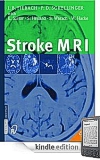
Fiebach
Schellinger
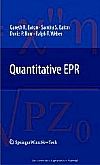
G. & S. Eaton
et al
| A new crop of MR books
During the last three month became available seven new books in MRI (4), NMR (2) and EMR (1). MRI publishing is neatly ahead, due mostly to specialized texts for the medical profession.
Here are the titles:
----- MRI:
- Musculoskeletal Ultrasound with MRI Correlations,
- edited by Vikram Dogra and Diana Gaitini and published by Thieme, focuses on the ultrasound muscoskeletal imaging but uses MRI for comparisons and as a reference. It is eminently educational, heavily illustrated and quite complete.
- Stroke MRI
- by Jochen Fiebach and Peter Schellinger, published by Springer, combines the knowhow of top German (Uni Heidelberg) and US (Bethesda, MD) specialists. So far it is available only for Kindle (hardcover is on the way). Includes a case collection of 25 hyperacute stroke patients.
- Breast MRI, An Issue of Magnetic Resonance Imaging Clinics
- by Linda Moy and Cecilia Mercado, published by Saunders, is one of those very practical how-to books for those starting or running a breast-imaging clinical practice.
- Advances in MRI of the Knee for Osteoarthritis,
- edited by Majumdar Sharmila and published through World Scientific Publishing, contains contributions from many investigators using MRI to diagnose and study osteoarthritis of the knee.
----- NMR:
- Platinum and Uranium Hexafluorides: Structural Chemistry, NMR, Thermodynamic and Magnetic Properties, Effects of Spin-orbit Interactions
- by Svyatoslav Gabuda and Svetlana Kozlova, published by Nova Science, is of course highly specialized. The NMR part covers 19F solid-state data for molecular hexafluorides and hexafluoro complexes.
- Nuclear Magnetic Resonance,
- edited by Graham Webb and Krystyna Kamienska-Trela and published by the Royal Society of Chemistry, is is one of those RSC Specialist Periodical Reports (Volume 33) covering recent progress of the whole field from the chemist's perspective. The drawback is its outrageous price.
----- EMR (EPR, ESR):
- Quantitative EPR
- by Gareth and Sandra Eaton, David Barr and Ralph Weber, published by Springer, addresses the most thorny evergreen topic of EMR. Considering the authors, I do not doubt that the book is comprehensive, authoritative, up to date, and eminently practical. A must for any EMR laboratory.
|
August 26, 2010
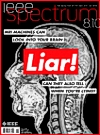
Read more
| Commercial fMRI lie detection service
When the first worried considerations about possible ethical misuses of MRI started appearing, many people paused to listen (see, for example, the 2007 entry Can fMRI become a new brain-snooping gadget? on this blog). The worries regard particularly the functional MRI variety (fMRI) indicating that, despite appearances, we are more worried about our mental autonomy than about our abdomens. The stories continue to crop up even on professional journals as IEEE Spectrum which dedicated its August cover - and a story by Mark Harris - to the potential use of fMRI as a lie detector.
Sincerely, I think that neither professionals (physicians, law enforcement officials, ...), nor possible misusers (dictators, drug cartels, ...) pay much attention to this aspect of the medical probing technologies. Especially in the case of fMRI, as Mark correctly points out, the results just barely reach statistical significance. This is to be combined with the complexity and costs of the technology, plus the fact that what is or is not a 'lie' to our subconscious brain does not necessarily have much to do with what everybody else (including our concious self) thinks is a lie - you need a psychiatrist to sort that one out. Besides, when it comes to real nasty misusers, they unfortunately know well that a bit of torture works orders of magnitudes better and costs orders of magnitudes less.
With all the scary bio-technological ethical problems lurking on the horizon, writing about any kind of brain-probing is of course very inviting to journalists. Including the now well established practice of specifying how many thousands of times is the MRI magnetic field stronger than the Earth's (WOW! :-) Though Mark did not avoid this trap, his article entitled MRI Lie Detectors is well written and his analysis is correct. Moreover, there was a valid specific reason for writing it: the birth of the very first Company (No Lie MRI) offering fMRI lie detection services on a commercial basis.
So, if you really need to prove to your wife you were always faithful to her, you now know where to go. But I warn you: don't do it if you ever dreamt about having crazy sex with that fabulous girl you once saw on a commuter train ... !!!
|
August 19, 2010
Books about
QUANTUM
COMPUTATION
100+ titles!
QUANTiKI
Quantum
Information
Wiki
Current status:
15 = 3 * 5
| Is there a future for Quantum Computing?
I was planning to write this entry since a long time because many MR students kept asking me what was all the talk about quantum computers and what they had to do with spin systems and spin manipulations typical of nuclear and electron magnetic resonance. I kept postponing the writing because I did not feel versed enough in the field to make a credible exposition. This situation did not really change much. I listened to a number of talks, read a number of papers, and even compiled a list of books about quantum computation and related matters, but I still did not make up my mind about whether this thing will change the world or whether it will be a phenomenal flop. I just fear that the probability of the latter outcome is orders of magnitude higher than that of the former one.
Of course, nobody can really foresee the future, so if you want to dedicate to the topic your time and money, go on and disregard my idle talk. After all, if one looks for anything hard enough and long enough, something is bound to come up, even though it need not be what one was initially looking for. Consequently, I am not worried about the use of public money - as long as the hatching machines keep running, who cares if a few eggs don't hatch.
A qubit of history
The idea of a quantum computer was introduced in 1982 by Richard Feynman [1,2], one of the giants of last century physics. He was frustrated by the fact that the standard (boolean) computers were - and still are - manifestly inadequate to handle practical quantum mechanical problems and suggested that one might perhaps solve the impasse by using quantum devices to do the computing. It took a few years before the question was raised [3] whether such quantum computers might not solve even some 'classical' computation problems more efficiently than boolean computers. On purely theoretical grounds, several examples were found where a quantum algorithm performs comparably to a boolean one. The true breakthrough, however, occurred after Peter Shor [4,5] has proved that a particularly stubborn computational problem - that of factoring large integer numbers into their prime factors - could be solved by a quantum computer in a nick of time. This captured the attention of great many people (including science fiction writers) since the extreme difficulty of factoring is the enabling characteristic of modern cryptography (the RSA algorithm [6] of 1978). The frantic quest for a quantum computer started in earnest and the field got flooded by both public and private money. On the theoretical side, there was a steady progress with regular additions of quantum algorithms to solve this-or-that and of hypothetical quantum computer architectures (see the list of monographs). Nowadays, the original excitement about the factoring has ebbed a bit, however. To the relief of CIA cryptographers, there are still no quantum computers in sight. Besides, since there is no guarantee that the factoring can not be done efficiently on boolean computers (we just don't know how), there has been a steady and fruitful quest for non-RSA cryptographic methods. Yet quantum computers were already launched (in a way, at least) and by now absorbed too much money ( = respectability) to quit.
The quantum blues
The bottom line is, of course, that after all those decades of hard work, and despite 100+ books describing how easily can quantum computers do all kind of tricks, no real quantum computers are actually available.
A quantum computer should use and manipulate qubits, the quantum equivalent of bits. But while bits are extremely easy to represent (0 or 1, yes or no, stain or no stain, charge or no charge, single wink or double wink, etc) and manipulate (any PC handles trillions of them a second), qubits are very hard to come by and the few objects found so far that look as though they might do the trick present a long list of vexing imperfections. They should be quantum systems with just two states, undergoing quite specific mutual interactions in order to get entangled in just the right way, not undergo any other interactions, be long-lived enough to permit their manipulation and, on top of it, it would be very helpful if we could manipulate them one-by-one. These may be just too many requirements: any real quantum system is inevitably subject to at least a dozen interfering interactions and to a number of deleterious decoherence phenomena (such as de-phasing and relaxations). The one-by-one spin manipulation, in particular, is not just extremely difficult, but actually brings fore formidable theoretical questions because, at this level, we still don't quite understand [7] all aspects of quantum physics (as opposed to the more standard quantum mechanics of ensembles). Moreover, one of the few things on which there appears to be a consensus is that, due to its very nature, a quantum computer has only a finite statistical probability of hitting the correct result. Consequently, all results must be back-checked to see whether they are correct ...
How does Magnetic Resonance enter the picture
This one is easy to answer: because a spin 1/2 particle placed inside a magnetic field has indeed just two states and thus satisfies the first requirement for a qubit. Apparently, the NMR and ESR crowd also knows how to manipulate such spins by means of RF pulses, though not yet on a spin-to-spin basis. The problem is to find a spin system satisfying also all the other requirements and refine the manipulations. A great lot of effort went into this. At the last EUROMAR meeting I have listened to a presentation by Dieter Suter (Spin Qubits for Quantum Information Processing) and was really fascinated. Those trying to engineer qubit registers from molecular spin systems are no doubt ingenious people and ferret out quite a lot of interesting things. Consequently, though there is also a lot of work based on optical methods, magnetic resonance is considered the most likely gateway to the realization of a practically viable qubit. Several quantum-computer talks and posters are now regularly scheduled at all broad-coverage NMR and ESR meetings such as EUROMAR and ENC.
Current status
In 1991 IBM announced that they managed to manipulate a molecule of alanine in a way to function as a 7-qubit register and make it factor number 15 into its prime factors. That caused waves of enthusiasm but, unless somebody keeps some stuff under a very tight lid, it is still the top practical quantum computation achievement. During the last two decades other big companies and major research institutions have played with the idea and there were many reports on physical instances of quantum registers with sizes anywhere between 2 and 10, but very little - if anything at all - in the way of actual computing.
When it comes to start-up companies, I am aware of just one venture - the Canadian D-Wave Systems. They claim to have realized a 16-qubit register and to be building three 128 qubit machines. However, there is a lot of hype in what they say, generating a credibility gap as to what they really have. The prestigious IEEE Spectrum [8] listed them among the ten most probable high-tech losers, using the opportunity to take on the whole field. Cited:
Now, building a practical quantum computer has proved hard. Really hard. Despite efforts by some of the world's top physicists and engineers and the likes of IBM, HP, and NEC, progress has been slow. Ask the experts and they will tell you these systems are a decade - or five - away.
The situation reminds me of a late seventies project at the University of Padova (Italy). There a group of mathematicians got a generous grant to develop a hybrid digital-analog computer. The rationale was that since analog computers can solve sets of coupled differential equations in a matter of seconds, regardless of the set's size, such sub-tasks, wherever needed inside a broader computational framework, should be handled by analog circuitry. At that time, the fastest boolean computers were doing one floating point binary operation in about 2 ms (compared to a few picoseconds today) and analog computers existed and worked fine in a number of fields. I was using one in Prague in mid 60's to simulate multi-component chemical kinetics, in Padova they used them to simulate the hydrodynamics of the Venetian lagoon area, and weather forecasters perhaps use them even today. So combining digital and analog computing looked like a bright idea and, in a sense, it was. Yet today there are almost no digital-analog hybrid computers around and even the use of analog-only computers has dwindled close to zero.
The reason, I believe, is that once we start relying on the real world to carry out our computations, we immediately hit the real-world's limited precision and flexibility due to a thick jungle of interfering phenomena (Nature has its own agendas). We were extremely lucky to find the transistor - it is a so amazingly perfect boolean inverter that we could hardly ever hope for anything better (even so: hit it with an ionizing particle and your PC may crash). But analog computers made of resistors, capacitors, and operational amplifiers? Come on! Since when are any real instances of such components equivalent to the idealized symbols in the schematics: beyond the second decimal digit, they rapidly become an engineering and mathematical nightmare!
Similarly, a set of magnetic nuclides inside a real molecule is very far from the abstract mathematical concept of a qubits register, especially considering the required but idealized spin-spin interactions ?! We are desperately trying to find real physical systems which would match our pre-conceived idea of a quantum computer rather than abstracting common features from reality the way we did in other cases (boolean, neural, fuzzy, genetic, ... computers and algorithms). We could be lucky, of course, but after so many decades and 100+ monographs it appears unlikely. Successful technologies usually flare up very fast and shine brightly within a few years after discovery (think about the glorious first decade of NMR).
Anyway, I am sorry for the pessimistic tone of this entry, but at least it is sincere. Personally I do not believe that this kite will ever fly. But should it turn out that I was wrong, I hope that by having instituted the list of monographs (which I am going to maintain), I will have contributed anyway (talk about playing it safe :-)
Since the field of quantum computation is full of enthusiasts, I of course expect a heated opposition and lots of comments. I will publish all of them verbatim, deleting just the dirty words :-)
References:
- Feynman R.,
Simulating physics with computers,
Internat.J.Theoret.Phys. 21, 467-488 (1982).
DOI 10.1007/BF02650179.
PDF download.
More and still
more.
- Feynman R.,
Quantum mechanical computers,
Found.Phys. 16, 507-531 (1986).
DOI 10.1007/BF01886518.
PDF.
- Deutsch D.,
Quantum theory, the Church-Turing principle and the universal quantum computer,
Proc.Roy.Soc.London A400, 97-117 (1985).
DOI 10.1098/rspa.1985.0070.
PDF.
- Schor P.W.,
Polynomial-Time Algorithms for Prime Factorization and Discrete Logarithms on a Quantum Computer,
SIAM J.Sci.Statist.Comput. 26, 1484 (1997).
Open access on http://arxiv.org/abs/quant-ph/9508027v2.
Preliminary version appeared in:
Proceedings of the 35th Annual Symposium on Foundations of Computer Science,
Santa Fe, NM, November 1994. IEEE Computer Society Press, pp. 124-134.
I recommend that you read at least the Introduction which wraps up the situation up to 1996.
The term "nuclear spin" appears only once in the article (in a parenthesis) but, interestingly enough,
"spin" is listed in the keywords.
- Ekert A., Jozsa R.,
Quantum computation and Shor's factoring algorithm,
Reviews of Modern Physics 68, 733-753 (1996).
DOI 10.1103/RevModPhys.68.733.
PDF.
This is the first major Review of the topic in a physics journal. The authors write: "Current technology is beginning to allow us to manipulate rather than just observe individual quantum phenomena. This opens up the possibility of exploiting quantum effects to perform computations beyond the scope of any classical computer". Pity that exactly the same could be written today.
- Rivest R., Shamir A., Adleman L.,
On digital signatures and public-key cryptosystems,
MIT Laboratory for Computer Science, Technical Report, MIT/LCS/TR-212.
PDF.
As an emerging alternative system, see
ECC cryptography.
- Bacciagaluppi G., Valentini A.,
Quantum Theory at the Crossroads: Reconsidering the 1927 Solvay Conference,
Cambridge University Press 2009. ISBN 978-0521814218.
more >>
- Guizzo E.,
Does Not Quantum Compute, D-Wave Systems' quantum computers will likely be costlier and slower than conventional ones.
IEEE Spectrum 1.10, 38-39 (2010).
Link.
Disclaimer: I presume that all the above-listed PDF downloads are legitimate.
In any case, all legal resposabilities reside with the web sites that make them available.
|
July 23, 2010
More
WeekEnd Stuff
| Happiness versus Bliss
Happiness is spinning forever, while
True Bliss is precessing all together
in a strong and constant field.
|
July 21, 2010

WWMR
=
EUROMAR
+
ISMAR
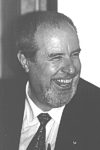
Ivano Bertini,
WWMR Chair.
| Glimpses of the WWMR
The July 4-9 joint EUROMAR & ISMAR meeting, nicknamed WWMR (World-Wide Magnetic Resonance) was certainly an exciting place to be. Unfortunately, I could attend it for only one day, which was absolutely not enough - too many people to meet, too many posters to see, and too little time to hear even just a few presentations. The location (Florence, Italy) was beautiful, too, provided you kept out of the 40 °C noon heat.
The meeting was large but, as they come today, not exceptionally so. With 1253 participants coming from 53 Countries it about matched the last year's 50th ENC, slightly exceeded this year's ENC, but was definitely smaller than this year's joint ISMRM-ESMRMB meeting (Stockholm, May 2-7) with its 6000+ participants.
WWMR was Chaired by Ivano Bertini who is known world wide as one who does great BioNMR science and directs the Florence CERM, one of the EU Large-Scale NMR Facilities (EU-NMR). He is also one of the few persons in European Science who can stand up to the Brussels bureaucrats and muscle out enough money to keep it all going (we should all try and promote him as the next EU High Commissar for Science).
The Conference program was just as huge and varied as the Conference itself. Of course, CERM (as well as much of the whole EU-NMR infrastructure) is prevalently protein-oriented and so are Ivano and the present and past members of his NMR group. Consequently, proteins played a very prominent role, but enough room was left for almost all other hot NMR topics to keep happy even such protein-fobic misfits like me :-) During my one-day hit-and-run stint I managed to listen to six very interesting presentations and remained totally satisfied.
The Conference Book of Abstracts is available online in PDF form (18.1 MB).
In the end, I will risk a few critical words, hoping that they will not ruin my long friendship with Ivano. That would be a disaster for me, because we are friends since mid 70's when I sold him his very first FT-NMR instrument (Bruker). Nevertheless, consider them a voice from the wilderness addressed to the organizers of future EUROMARs:
One thing is that I personally dislike parallel sessions and here there were most of the time six of them! Compare this with the established ENC format which stops at two, or even with the mammoth ISMRM/ESMRM which had many "threads" but never more than three parallel Sessions. The noble rationale behind many parallel sessions is to make talk as many people as possible. But, of course, if everybody talked simultaneously, there would be no listeners and, vice versa, if nobody talked, there would be no conference. So there exists an optimum number of parallel sessions which, I think, is smaller than six by a factor of at least two (could somebody find a math solution to this riddle, please). In this case the problem is compounded by the fact that there will be no Conference Proceedings, so any presentations a participant missed are gone with the wind, so to say.
Another problem, in my opinion, regards the treatment of sponsoring Companies. EUROMAR, unlike other large meetings, has a long tradition of steep exhibitor prices combined with little attention to the needs of the "vendors" (there are Companies who have actually decided to drop EUROMAR from their agendas). The latest EUROMAR edition was in this respect better than the St. Petersburg edition two years ago but, nevertheless, exhibitors were relegated to an over-chilled basement at floor -2, had to put up with pre-formatted booths (except Bruker, who had an entire room) and, as far as I could see, were intercepting very little traffic.
|
|
Archive
| For a complete list of all entries since 2005, see the running INDEX
|
|
Visitor #

ADVERTISE with us
NMR, MRI, ESR, NQR
Companies
Societies
Centres & Groups
Journals & Blogs
References
Free Texts
History
Links
BOOKS Lists
MATH | SOFTWARE
PHYSICS | CHEMISTRY
ELECTRONICS | DSP
WWW | Patents+IP
SPECTROSCOPY
MRI | NMR | ESR
Instruments
ARTICLES
Scalar relaxation
Biography of F.C.Yu
Hebel-Slichter effect
MR Antenna Theorem
NMR Dead Time
One-Page MR Primer
K-space and MRI
S/N Perspectives
OTHER
SI Units |
Dimensions
Physics Constants
Science Links

Support this site!
SHOP from here:
COMPUTERS:
Deals
Bestsellers
Accessories
Calculators
This page is
SPONSORED by:


Random offers:
|